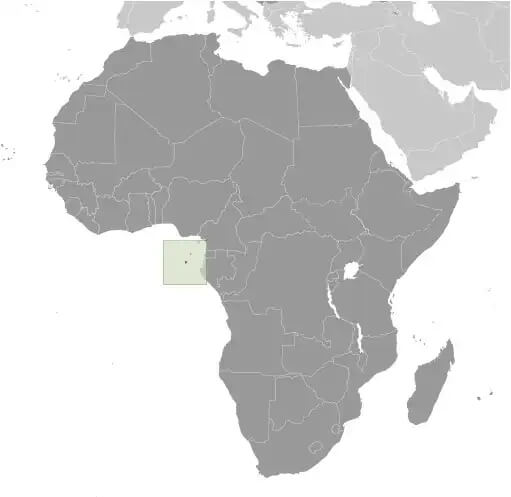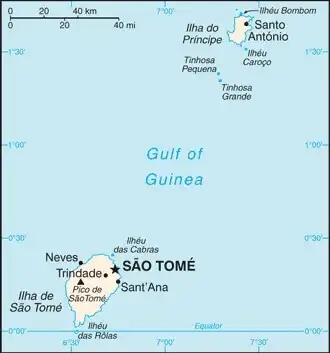World Book
Sao Tome and Principe
Introduction
Background
Portugal discovered and colonized the uninhabited Sao Tome and Principe islands in the late 15th century, setting up a sugar-based economy that gave way to coffee and cocoa in the 19th century. Independence was achieved in 1975, but democratic reforms were not instituted until the late 1980s. The country held its first free elections in 1991.
Geography
Area
total : 964 sq km
land: 964 sq km
water: 0 sq km
Climate
tropical; hot, humid; one rainy season (October to May)
Natural resources
fish, hydropower
People and Society
Population
total: 223,561 (2024 est.)
Ethnic groups
Mestico, Angolares (descendants of Angolan slaves), Forros (descendants of freed slaves), Servicais (contract laborers from Angola, Mozambique, and Cabo Verde), Tongas (children of servicais born on the islands), Europeans (primarily Portuguese), Asians (mostly Chinese)
Languages
Portuguese 98.4% (official), Forro 36.2%, Cabo Verdian 8.5%, French 6.8%, Angolar 6.6%, English 4.9%, Lunguie 1%, other (including sign language) 2.4%; other Portuguese-based Creoles are also spoken (2012 est.)
Religions
Catholic 55.7%, Adventist 4.1%, Assembly of God 3.4%, New Apostolic 2.9%, Mana 2.3%, Universal Kingdom of God 2%, Jehovah's Witness 1.2%, other 6.2%, none 21.2%, unspecified 1% (2012 est.)
Population growth rate
1.42% (2024 est.)
Government
Government type
semi-presidential republic
Capital
name: Sao Tome
Executive branch
chief of state: President Carlos Manuel VILA NOVA (since 2 October 2021)
head of government: Prime Minister Américo d'Oliveira DOS RAMOS (since 12 January 2025)
Diplomatic representation in the US
chief of mission: Ambassador (vacant)
Economy
Economic overview
lower middle-income Central African island economy; falling cocoa production due to drought and mismanagement; joint oil venture with Nigeria; government owns 90% of land; high debt, partly from fuel subsidies; tourism gutted by COVID-19
Real GDP (purchasing power parity)
$1.291 billion (2024 est.)
$1.279 billion (2023 est.)
$1.275 billion (2022 est.)
Real GDP per capita
$5,500 (2024 est.)
$5,500 (2023 est.)
$5,600 (2022 est.)
Exports
$96.977 million (2022 est.)
$75.256 million (2021 est.)
$49.337 million (2020 est.)
Exports - partners
Pakistan 54%, Germany 11%, Netherlands 7%, France 5%, UAE 3% (2023)
Exports - commodities
crude petroleum, cocoa beans, vehicle parts/accessories, palm oil, aircraft parts (2023)
Imports
$219.322 million (2022 est.)
$201.145 million (2021 est.)
$160.097 million (2020 est.)
Imports - partners
Portugal 35%, Angola 13%, Gabon 11%, Japan 8%, China 6% (2023)
Imports - commodities
ships, refined petroleum, rice, electric generating sets, cars (2023)
Human Development Index
The country's Human Development Index (HDI) is 0.637, ranking it 141st out of 193 countries tested. (more information)



